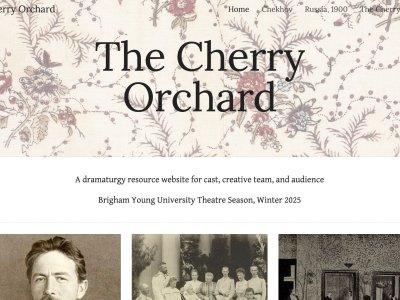
I used to vandalize property now I evangelize properly.
Growing up, the only thing I knew about graffiti was that it was illegal, so I was naturally interested in it. Graffiti can be found everywhere in every culture and it is old. We have wall art preserved in Pompeii and before that, people drew art on cave walls. Graffiti is many things, it can be vulgar, insightful, hateful, loving, positive, negative, and as I found, spiritual. That isn’t to say that graffiti isn’t subversive, that’s part of the appeal. What I mean to say is that subversion can help communicate spiritual ideas in new valuable ways. In fact, sometimes new perspectives are exactly what we need in order to learn more.
From the start of Godspell’s production, we knew that we were attempting something out of the ordinary. Utah county is a community that values religion and we knew that a musical that portrays Jesus Christ in a nontraditional way needed to be handled with great care. That said, we knew that Godspell has a great deal of respect for Jesus and that seeing a new take on such an important figure would be a wonderful gift to give our theater-going community.
Godspell, like the gospel, that it is based upon, is revolutionary. The teachings of Jesus Christ are full of radical ideas. Jesus taught people who were incredibly religious, and who followed traditions that distracted from the most important parts of their religious laws. What Jesus was doing was seen as different and revolutionary. With that in mind, we were drawn to an aesthetic that communicated revolutionary ideas in a way that would reflect the novel perspective of the show. Graffiti was a perfect fit.
I can’t deny that when I first read the script I was surprised by the playful energy that the script brings to the gospel of Mathew and as production meetings began I was struck by a beautiful being created in the process. The director, Tim Threlfall wanted to bring special attention to three passages of scripture, one of which was Matthew 18:3-4, which teaches that except a person becomes as a little child they can not enter into the kingdom of heaven. From this concept grew the set, which is an old playground overgrown with weeds and covered in street art. As the story goes, the characters return to a childhood that has been abandoned and left to become overgrown. They become as little children and find innocence in something that we might dismiss as messy or worth less.
This is the power of spirituality in art like graffiti; this is art that to many is inappropriate and unwanted but even though it has this cultural baggage it can still lift us up and remind us of higher things. I have said that I often worry that people don’t have the spiritual opportunities that they could because the conventions of religious art might not appeal to them. By seeing the capability of even the most unwanted art forms to be good and virtuous we begin to see that spiritual messages are for all people. Being a spiritual person is not just for people who grew up listening to oratorios, it is for everyone who wants it. By showing graffiti with religious messages we prove that spiritual matters are for all people and that spiritual experiences are as diverse as the people who need them.
In my research, I came across many artists who use graffiti as a way to promote messages of religious unity, tolerance, and to promote the teaching of Jesus Christ. I am impressed by the work of Gospel Graffiti, a community of international street artists who tag walls with passages of scripture and new takes on religious art. They operate under the saying “Do not vandalize property, but evangelize properly.” The idea is to fill urban spaces with positive messages that add beauty to a community.
I am grateful for the opportunity that I have had to look at different forms of art and find messages I never expected to find in them, I am glad that I know about Alexandr Tsypkov, an icon painter sharing his work on the streets of Russia. I am glad to know about Stephan Strumbel, a street artist who helped to reinvigorate a struggling congregation in Berlin. I am glad to know about people like Como who create art that advocates for religious tolerance, and I am glad that people have the opportunity to receive spiritual messages in ways that are new. I am glad that people in my community are going to be able to see Godspell and that more people will receive spiritual truths unto their own understanding.
I am reminded of a passage from Isaiah, "he hath no form nor comeliness; and when we shall see him, there is no beauty that we should desire him." In this moment, Isaiah says that people would ignore Jesus because of his lack of beauty, and that people would not hear his message because it came from an unexpected source. By learning to see beauty in new things we learn to perceive more of the good in this world, we become kinder, and we are more likely to learn difficult lessons. I encourage you to find beauty in unusual things to find virtue where you least expect it and learn from the humble and the misunderstood.


